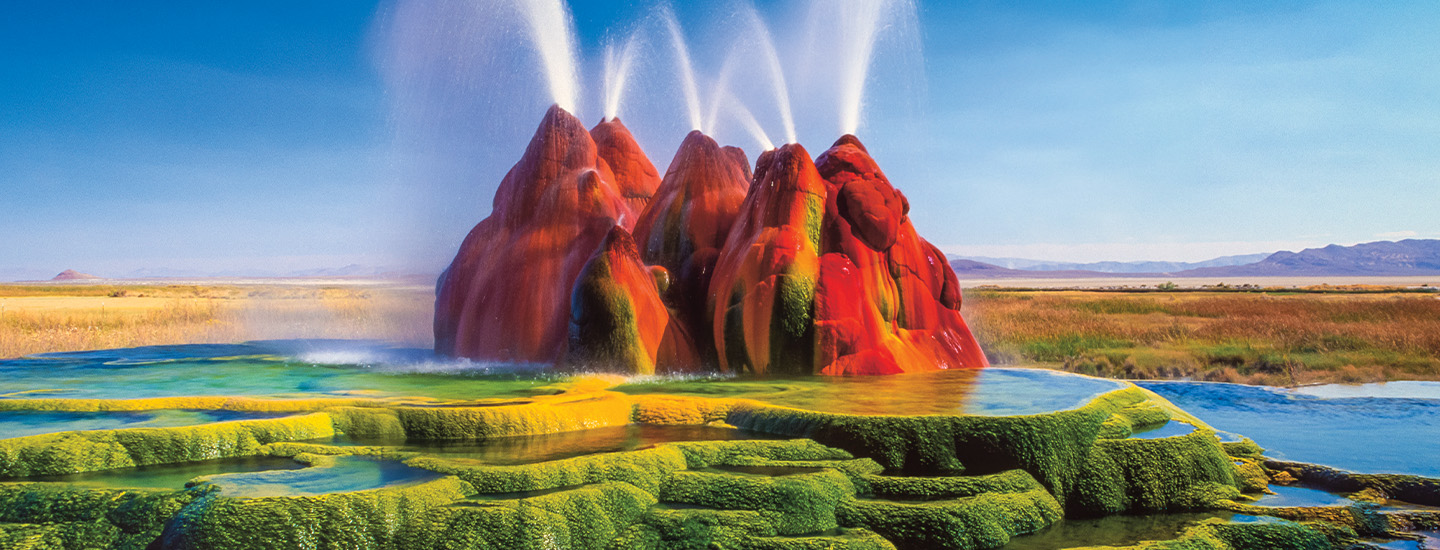Jim McMahon/Mapman®
These colorful mounds are a wow now, but 60 years ago, they didn’t even exist. Fly Geyser sprang to life back in 1964, when workers drilled in this spot just outside the Black Rock Desert in northwestern Nevada. They were searching for geothermal resources—underground water sources or rocks warmed by Earth’s core that can be used to create electricity.
The water the workers found wasn’t hot enough for their purposes, so they capped the hole. But the seal failed soon after, and steamy water has been spewing ever since.
Over the years, algae that thrive in warm, moist environments have given Fly Geyser unforgettable splashes of color. And layers of minerals from the water have built up to form the mounds—now 12 feet high and growing!

